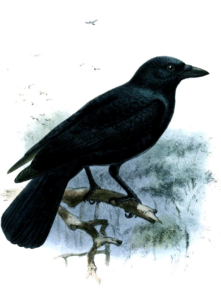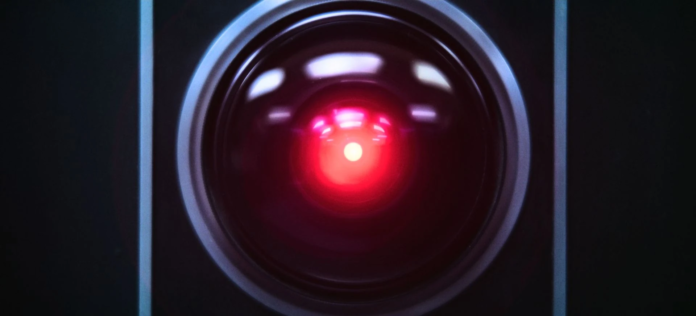
What’s wrong with you humans, using us as insults? Just the other day, I heard one of you call your boss a vulture! Now, I’m not here to deny that man’s covetous proclivities, but I happen to have a friend who’s met a vulture, and I hear they’re quite lovely chaps. At any rate, they’re probably going to go extinct because of you idiots; some respect on the way out would be nice. Perhaps I’m being uncharitable. I know a lot of you are rather well-meaning, and that you study other animals to understand us better. But you have to realize, my dear apes, it’s not always the case that we can’t figure out some of these tasks you present us with, but that we don’t feel like doing them in the first place!
Anyway, let’s move on to the main subject of my little essay–a paper I found in one of your journals. Here, von Bayern and his buddies studied compound tool construction in my species–New Caledonian crows. Compound tools are made from two or more separate objects, each of which might function individually as a tool. Until recently, compound tool construction has only been observed in your family—the hominids. The most famous example of compound tool construction outside of humans occurred over a century ago when a man named Wolfgang Köhler was studying apes on an island much like mine and discovered that one of his chimpanzees, Sultan, was able to combine two bamboo sticks to reach a banana. With the increasing evidence that members of my family, the corvids, seem to possess rather impressive cognitive abilities (if I do say so myself), von Bayern and his crew decided to conduct a study in which they presented a few of my friends with a variety of tools, some of which could be combined with others to create more complex tools. They were first provided with a food reward that could be extracted with a single tool, after which the researchers introduced pieces of food that were much too far to reach without creating a compound tool. Half of the crows in the experiment (yes, yes, go ahead and laugh–I’m sure all of your friends are geniuses, aren’t they?) were able to combine the tools with no prompting from humans. Even your study concedes that my friends seemed to have created the tools for a very specific purpose and that they seemed to understand when to use the tools because the further the reward was, the more likely they were to combine the provided tools before their first attempt at reaching their treat.

I was more or less happy with the paper so far, but it was the next part that made me squawk with delight! One of my buddies, Wak-wak (I think he was called Mango in the paper–what is it with you people naming us after food? Would you like it if I called you Burger?), happened to break several tools in an effort to fit them into each other. Nevertheless, once he was able to overcome these difficulties, he repeatedly constructed 3- and 4-component tools. You see, as my forefathers took to the heavens, it made it more difficult for their progeny to engage in tool use. To put it more simply, we don’t have hands, damn it! Not one thumb! How the hell am I supposed to build a civilization when all I’ve got is this damn beak?
I will now let you in on a secret. Remember that chimp I told you about earlier? Köhler helped him make the tool. In fact, Sultan was unable to use the bamboo sticks until Köhler showed him how he could hit his finger into one, and even still, it took him over an hour to figure out the task. Moreover, he had some difficulty replicating the task the following day. Compare that to my comrades, who were able to figure the task out in at most six minutes and continued to construct new tools in successive trials. Look, I know that it’s difficult for my species to communicate with yours; hell, I’ve been scrawling this letter out for the past three months on a piece of driftwood. Ultimately, we’re quite different, and you really can’t know for sure why we do the things that we do. All that I ask is a little compassion. A little understanding. A little respect. Sure, we can’t do long division, but why would we want to? Just remember that we all share this planet, and that you can never really know what’s going on in our heads.
Citations:
Ogada et al. (2015). Another Continental Vulture Crisis: Africa’s Vultures Collapsing toward
Extinction. Conservation Letters, 9. https://doi.org/10.1111/conl.12182
von Bayern et al. (2018). Compound tool construction by New Caledonian crows. Scientific
Reports, 8. https://doi.org/10.1038/s41598-018-33458-z
Image Credit:
Araucaria columnaris New Caledonia via Creative Commons license.
New Caledonian Crow via Wikimedia Commons.
Note: The anthropomorphism is merely a vehicle to draw light to a couple of issues. Also, please continue naming animals after food.


